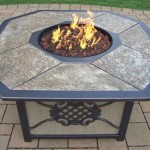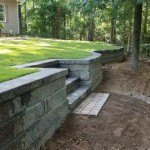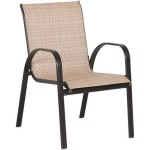Creating a Patio with Quikrete Walkmaker: A Comprehensive Guide
Quikrete Walkmaker is a popular and readily available product designed to simplify the process of creating concrete pathways, patios, and other hardscape features. It essentially acts as a mold that defines the shape and pattern of individual concrete stones, allowing homeowners and contractors to achieve a professional-looking result with relative ease and minimal specialized equipment. This article provides a detailed exploration of the Quikrete Walkmaker system, outlining its components, proper usage techniques, and considerations for achieving a durable and aesthetically pleasing patio.
The core of the Walkmaker system is the reusable plastic mold itself. These molds come in a variety of patterns, simulating brick, cobblestone, flagstone, and other popular paving styles. The mold creates the individual stone shapes, which are then filled with concrete mix. After the concrete has partially set, the mold is removed, revealing the patterned surface. The process is repeated, incrementally adding sections until the desired patio size is achieved.
Beyond the mold, the success of a Walkmaker patio relies heavily on proper preparation, technique, and the quality of materials used. This includes selecting the correct concrete mix, preparing a suitable base, and employing the appropriate curing methods. Ignoring these factors can lead to a patio that is prone to cracking, shifting, and premature deterioration.
Key Point 1: Essential Materials and Tools for a Quikrete Walkmaker Patio
Constructing a patio with the Quikrete Walkmaker requires a specific set of materials and tools to ensure a successful and long-lasting result. The primary material, of course, is the concrete mix itself. Quikrete offers pre-blended concrete mixes specifically formulated for this application, often labeled as "Walkmaker Mix" or "Cracked Concrete Repair". These mixes are designed to have a suitable consistency and strength for use with the molds. The user can consider the choice to use a mix with high early strength for faster setting although the mix might be pricier.
The amount of concrete needed will depend entirely on the size of the patio being constructed. It is crucial to accurately calculate the required volume to avoid material shortages mid-project. Most Walkmaker molds specify the amount of concrete needed per mold fill, typically measured in cubic feet. Multiply this value by the total number of mold placements expected to cover the desired area to determine the total concrete requirement.
In addition to the concrete mix, other essential materials include water for mixing the concrete, and a release agent, such as cooking spray or form release compound, to prevent the concrete from sticking to the mold. Some people also opt to use colorants to tint the concrete for a more customized appearance. These colorants are typically added to the concrete mix during the mixing process, adhering to the mix ratio in its instructions.
The tools required for a Walkmaker patio project include a wheelbarrow or mixing tub for combining the concrete and water, a shovel or hoe for mixing, a trowel for smoothing the concrete within the mold, a level for ensuring the patio surface is even, a measuring tape for marking out the desired patio area, and a rubber mallet (or similar tool) to gently tap the mold for even concrete distribution. Personal protective equipment, such as gloves, safety glasses, and a dust mask, are also highly recommended to protect against the caustic properties of concrete and the inhalation of dust particles.
Furthermore, consider the tools for ground preparation. A shovel, tamper, and possibly a landscaping rake will be needed to level and compact the ground. A string and stakes can be used to mark out the perimeter of the patio, and a pickaxe could be required if the soil is particularly hard or rocky.
Key Point 2: Step-by-Step Guide to Using the Quikrete Walkmaker Mold
The process of using the Quikrete Walkmaker mold involves a series of steps, each crucial for achieving a high-quality patio surface. The first step is site preparation. This involves clearing the area where the patio will be located of any vegetation, debris, and loose soil. The area should then be excavated to a depth of approximately 4-6 inches, depending on the desired thickness of the concrete stones.
After excavation, a compacted base is essential. A layer of gravel or crushed stone, typically 2-4 inches thick, should be spread evenly across the excavated area and thoroughly compacted using a hand tamper or plate compactor. This base provides a stable and level foundation for the concrete, preventing settling and shifting over time. The base also helps with drainage, reducing the risk of water damage.
With the base prepared, the concrete mixing process can begin. Following the instructions on the concrete mix bag, carefully combine the dry mix with the appropriate amount of water in a wheelbarrow or mixing tub. Thoroughly mix the ingredients until a consistent, workable consistency is achieved. The concrete should be wet enough to flow into the mold but not so soupy that it loses its shape. Avoid dry pockets and make sure the mixture is uniform and homogenous. A good mix will hold its shape when scooped with a shovel.
Before placing the mold, lightly spray the inside surfaces with a release agent. This prevents the concrete from sticking to the plastic and makes removal easier. Position the mold on the prepared base and then carefully pour the mixed concrete into the mold cavities. Use a trowel to evenly distribute the concrete and ensure that all corners and edges are completely filled. Tap the sides of the mold gently with a rubber mallet to help settle the concrete and release any trapped air bubbles. It's important that the mold sits evenly on its base. Shift it around to level it before filling with concrete.
Once the concrete is in place and leveled, allow it to partially set. This typically takes anywhere from 20 to 60 minutes, depending on the ambient temperature and humidity. The concrete should be firm enough to hold its shape but still pliable enough to allow for slight adjustments. Test the concrete's set by gently pressing a finger into the surface. If it leaves a slight indentation but doesn't collapse, it's ready to be demolded.
Carefully remove the mold by lifting it straight up. Avoid twisting or tilting the mold, as this can damage the edges of the newly formed concrete stones. After removing the mold, use a damp sponge or trowel to smooth any rough edges or imperfections on the surface of the concrete. If desired, you can also apply a textured finish at this stage using a brush or other texturing tool. Some users prefer to wait for the concrete to cure fully before applying any finishing.
Repeat the process by repositioning the mold adjacent to the previously cast stone, aligning the edges to create a continuous pattern. Continue filling, demolding, and smoothing until the entire patio area is covered. It is important to clean the mold regularly during prolonged use to avoid concrete buildup which can impact future casts.
Key Point 3: Curing and Maintenance for Long-Lasting Durability
Proper curing is essential for achieving maximum strength and durability in a Quikrete Walkmaker patio. Curing involves maintaining adequate moisture and temperature levels in the concrete during the hydration process, which allows the cement particles to fully bind together. Insufficient curing can lead to weak, brittle concrete that is prone to cracking and spalling.
The most common method of curing concrete is to keep it moist for at least 3-7 days after placement. This can be achieved by regularly spraying the concrete surface with water using a garden hose or sprinkler. Alternatively, the concrete can be covered with wet burlap, plastic sheeting, or a curing compound. Curing compounds are liquid solutions that are sprayed onto the concrete surface and form a waterproof membrane, preventing moisture from evaporating. The selected curing method needs to be suitable for the ambient temperature. In hotter weather, more frequent watering or more effective covering is required.
The frequency of watering or the type of covering depends on the weather conditions. In hot, dry weather, more frequent watering is required to prevent the concrete from drying out too quickly. In cooler, humid weather, less frequent watering may be sufficient. Protect the patio from direct sunlight and strong winds during the curing period, as these can accelerate moisture loss. The rate of initial concrete set is heavily affected by the temperature of the materials and the surrounding weather.
Once the concrete has fully cured, it is important to maintain the patio to prevent damage and prolong its lifespan. Regular sweeping and cleaning are essential for removing dirt, debris, and stains. Avoid using harsh chemicals or abrasive cleaners, as these can damage the concrete surface. A mild detergent and water are usually sufficient for cleaning purposes.
Inspect the patio regularly for any signs of cracking or damage. Small cracks can be repaired with concrete crack filler, while larger cracks may require more extensive repairs. Power washing is typically not recommended. However, for heavily soiled areas, light power washing can be performed at low pressure and with a wide nozzle to avoid damaging the concrete surface. Consider sealing the patio, as this can enhance its durability and resistance to staining. Sealers can be applied with a brush, roller, or sprayer, following the manufacturer's instructions. Some sealers will enhance the appearance of the patio by providing a glossy finish.
Over time, weeds may grow in the joints between the concrete stones. These weeds can be removed manually or treated with a weed killer. Fill the joints with polymeric sand or a similar jointing material to prevent weed growth and stabilize the stones. Polymeric sand is a special type of sand that hardens when wet, creating a tight, durable joint between the stones. For regions with harsh winters, consider applying a de-icing salt alternative to prevent damage from freeze-thaw cycles. Avoid using traditional rock salt, as it can damage concrete surfaces.

Walkmaker Patio By Quikrete Concrete Makeover Stones

Quikrete Building Paths With The Walkmaker Sup

How To Make A Quikrete Walkmaker Patio

Quikrete 2 In X 24 Country Concrete Stamp Mold The Stamps Molds Department At Com

Quikrete Walkway Patio Nikki Lynn Design

How To Create A Diy Patio And Walkway With Quikrete Walkmaker Today S Homeowner Concrete

How To Make A Quikrete Walkmaker Patio

Quikrete Building Paths With The Walkmaker Sup

Quikrete Walk Maker Will Have You Laying Pavers Like A Pro

Quikrete Walk Maker 6921 34 Building Form 80 Lb Weight Capacity 2 Ft L Block W Plastic Com








